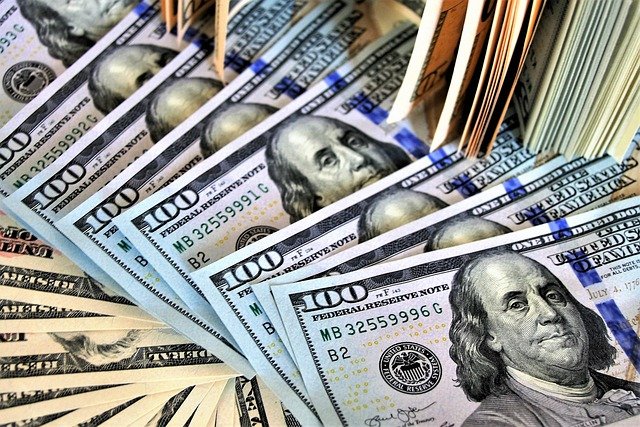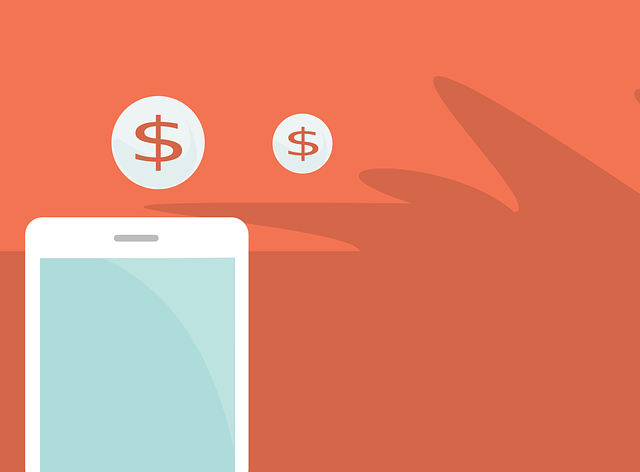How Much Do YouTubers Make? Comparing Small & Top Paid YouTubers
I've really gone down the YouTube rabbit hole since I started my channel a few months ago.
After blogging for 2+ years, it's been very enjoyable to mix up mediums and to grow WebMonkey's presence on a new platform.
Additionally, starting a YouTube channel has also inspired me to start a new case study!
If you missed the first part, you can checkout my post on how to get 1,000 YouTube subscribers to learn how the channel has grown and how you can build your own YouTube presence as a beginner.
Now, today I want to tackle the question “how much money do YouTubers make?”
I've finally monetized my YouTube channel, and the early signs have been incredibly exciting. Needless to say, if you're considering YouTube for making money online, I definitely recommend it!
I'm going to break down my earnings as a beginner channel, as well as some earning reports from some top paid YouTubers, so be sure to read this one to the end!
YouTube Monetization – How It Works
There's already an incredible guest post on WebMonkey about how to make money on YouTube.
However, I want to get into the details of exactly how YouTube monetization works and the options you have to make money as a small YouTube channel.
So, as you probably know, YouTube requires 1,000 subscribers and 4,000 hours of watch time to monetize.
Once you reach this, you can slap Adsense ads on your YouTube videos and start earning money:
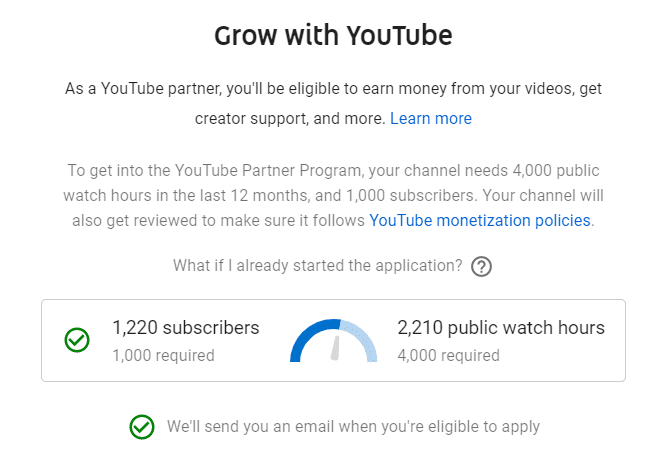
However, what I didn't know is that Google finally announced what percentage of ad revenue publishers get.
Specifically, Google keeps 45% of advertisement revenue from your channel, meaning you, the creator, get 55%
However, your advertisement revenue isn't as simple as you might think.
In fact, some factors that influence your CPM, or cost per thousand views, include:
- Niche – Like blogging niches, different YouTube topics cater to more expensive and competitive niches than others. For example, you can expect a finance or ecommerce channel to have a more competitive and expensive set of advertisers than a channel about toys.
- Audience Age – Google tries to limit advertising to children, and advertisers also use age targeting quite liberally. If your content focuses on children and teens, it probably impacts your CPM.
- Engagement – The longer your viewers watch, the more ads they can see. Additionally, viewer engagement on your ads also matters.
- Video Length. The reason YouTubers often make videos longer than 10 minutes is because longer videos typically rank better and also let you include mid-roll ads in your video, effectively boosting your ad revenue just for being over 10 minutes.
With these factors in mind, let's take a look at how much YouTubers make and what you can expect as a beginner.
How Much Do Small YouTubers Make?
To cut to the chase, I've been running YouTube ads for roughly 2 weeks and have made $275 in advertisement revenue.
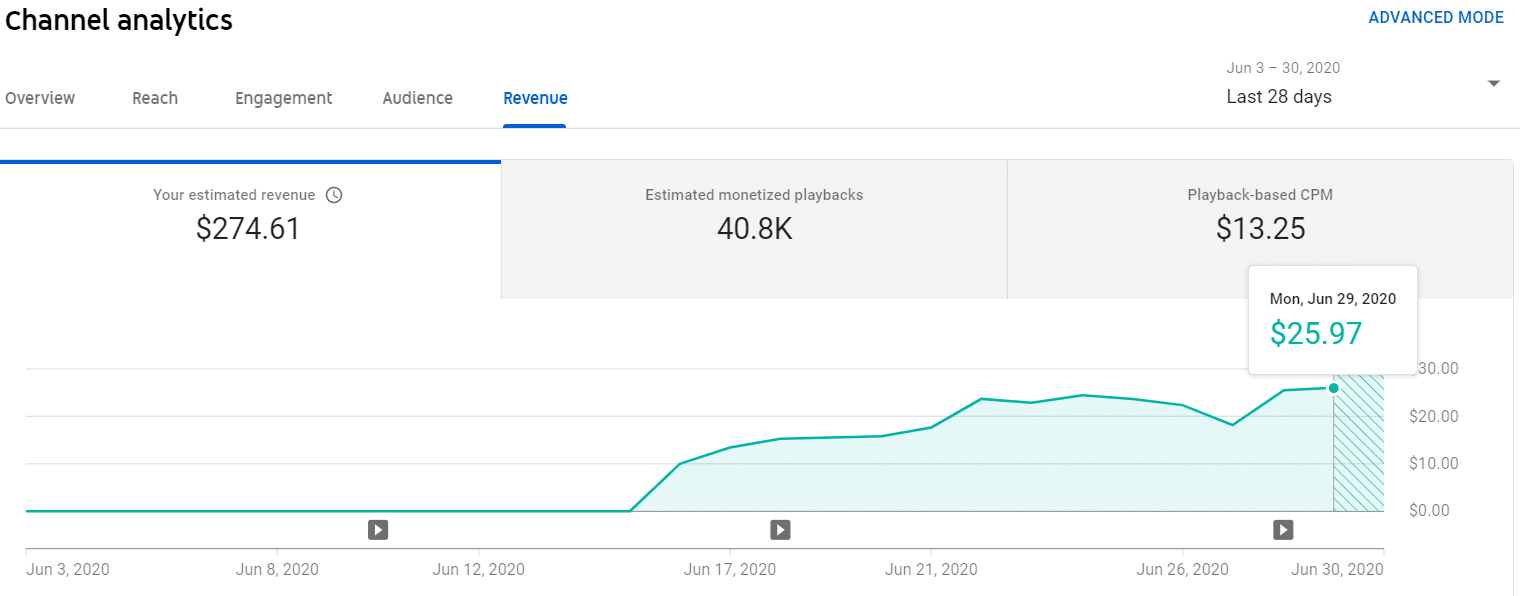
Considering my channel is under 3,000 subscribers, this revenue amount is definitely surprising.
Now, since I haven't had a full month of YouTube monetization, I'm really interested in talking about the CPM here.
Currently, my CPM is over $13 per thousand views, which is also insane to me.
For context, my Mediavine CPM ranges from $25 to $35. When I was running Monumetric ads, my CPM was $13.57.
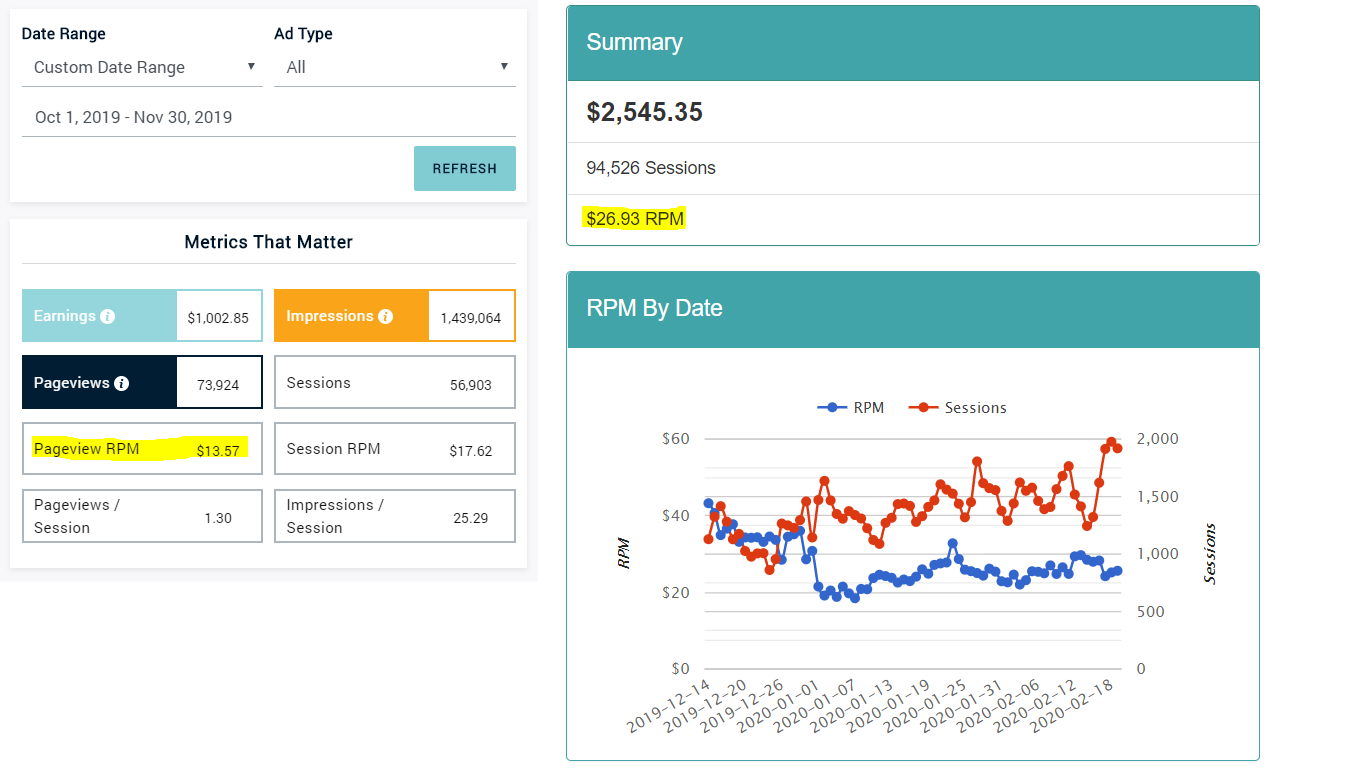
The fact that a YouTube CPM can match a managed ad network like Monumetric is immensely impressive.
Now, it's important to note that YouTube has certain requirements for what “counts” as an advertisement view. Basically, you have to watch an ad for more than 10 seconds or interact with it for it to count.
In any case, my beginner YouTube channel is averaging 50,000 to 60,000 views per month now, and I'm expecting to earn $500 to $600 per month as a beginner YouTube channel.
Of course, my video on how to make money as a teenager is carrying 95% of views and revenue, but this just goes to show that you just need one successful video for YouTube to start paying your groceries or part of your rent.
Other YouTube Income Reports From Small Channels
Obviously, small YouTubers without a popular video will make less than YouTubers who get lucky.
However, after looking at some other beginner YouTuber income reports, it's still a very promising platform for new channels.
In this video, Cathrin Manning breaks down how she made about $50 in 2 weeks when she only had 2,000 subscribers (she now has over 100K):
Cathrin is in a somewhat similar niche as my channel and creates content about YouTube, growing online, and YouTube monetization. I expect her CPM is pretty comparable.
I dug up another first YouTube paycheck video from Annie Long, a vlogger/liftstyle content creator.
In her video, she states her first paycheck was for more than $800.
Annie didn't go into her views unfortunately, but I checked and she didn't have a video that really took off for many months of YouTube, which makes her earnings even more impressive in my opinion.
Ultimately, what it boils down to is that YouTube has an average CPM of $9.88 according to a Q2 2018 study conducted by Adstage.
Again, your niche plays a role here, but I'm still thoroughly impressed at just how much money small YouTubers make.
I think this $9.88 ballpark is good to keep in mind if you want to pursue making money on YouTube over other platforms, especially if you're already getting views (you can extrapolate your numbers/growth to see if you're happy or not).
Admittedly, I've seen lower reports as well. According to Influencer Marketing Hub, the average CPM is closer to $7.60.
In any case, if you pick a lucrative niche and cater to an English speaking audience, expect an alright CPM.
If you read my post on blogging vs YouTube, you'll see I was actually kind of wrong about what's faster to monetize and scale.
You can make money by blogging faster since it takes time to reach 1,000 subscribers and 4,000 hours of watch time.
However, YouTube is already on track to earn what WebMonkey took more than a year to start generating consistently. Pretty nuts!
YouTube Earning List – The Top Paid YouTubers
Alright, time for a bit of daydream fuel.
If you search for how much do YouTubers make, you often get results for the highest paid YouTubers.
I think learning about smaller channels is more interesting because it's easier to conceptualize, but hey, I love a good list!
In December 2019, Forbes released a list of the highest paid YouTubers for that year.
Here's how the rankings break down:
#10. VanossGaming (Evan Fong)
Evan Fong has more than 25 million subscribers and creates video game content about Minecraft, GTA, and other popular games. He has nearly 1,200 videos and over 12 billion views.
2019 Earnings – $11.5 million.
#9. DanTDM (Dan Middleton)
Dan Middleton is a British YouTuber with 23 million subscribers. He's largely creates content about Minecraft but also tackles other video games. His channel has almost 3,400 videos and 16.8 billion views.
2019 Earnings – $12 million.
#7 (Tie). Markiplier (Mark Fischbach)
There's actually a tie for position 7/8 in terms of the highest paid YouTubers in 2019.
Markiplier takes one spot. He's another popular gamer (I'm seeing a trend here) with 26 million subscribers. To date, he's made over 4,700 videos and has more than 13 billion views.
2019 Earnings – $13 million.
#7 (Tie). PewDiePie (Felix Kiellberg)
PewDiePie is probably one of the most famous YouTubers just because of how popular he is worldwide.
Felix Kjellberg has over 100 million subscribers, and was the most subscribed-to YouTuber for quite a long running. He has more than 4,000 videos and 26 billion views.
I'm not sure why he isn't lower on the list, but I know he's taken breaks from YouTube and is mostly an entertainment channel.
2019 Earnings – $13 million.
#6. Preston (Preseton Arsement)
Preston is another gamer YouTube star who started off by making Call of Duty videos before focusing on a second channel about Minecraft.
Preston has several channels, including Preston, PrestonPlayz, and TBNRFrags. Collectively, this is millions of subscribers, thousands of videos, and billions of views.
2019 Earnings – $14 million.
#5. Jeffree Star
Jeffree Star's channel focuses on makeup tutorials, and even though he's number 5 on this list, I wouldn't be surprised if his brand deals and other revenue streams are pretty insane.
His channel has 378 videos, 2.36 billion views, and 17.8 million subscribers.
2019 Earnings – $17 million.
#4. Rhett & Link
Rhett and Link are childhood friends who host Good Mythical Morning alongside their own duo YouTube channel.
The pair have millions of views and subscribers across both channels and have made it into mainstream media plenty of times.
2019 Earnings – $17.5 million.
#3. Anastasia Radzinskaya
Anastasia is only 6 years old, so if you feel bad about your day job, join the club!
Her channel focuses on kids toys and you know, things a 6 year old would be interested in. Brand deals are a major part of her business, and her channel has 57 million subscribers and more than 400 videos.
2019 Earnings – $18 million.
#2. Dude Perfect
Dude Perfect is a comedy channel that also focuses on trickshot videos and dudes being dudes in general.
With almost 55 million subscribers and 11 billion views, it's also crazy that their channel only has 235 videos.
2019 Earnings – $20 million.
#1. Ryan Kaji
Like Anastasia, Ryan is a kid YouTuber who is absolutely dominating the toys niche on YouTube.
Between advertising revenue, brand deals, and affiliate sales, I'm not surprised Forbes ranks Ryan as the highest paid YouTuber in 2019.
2019 Earnings – $26 million.
So, how accurate is this YouTube earning list?
Well, according to Forbes, earnings are pretax and estimated based on “data from Captiv8, SocialBlade, and Pollstar as well as interviews with industry insiders.”
I think it's likely that there are other YouTube stars who earn more, especially because websites like Social Blade really just estimate advertisement revenue; there's no way for them to quantify brand deals or sponsorship or merchandise sales.
So, that brings me to another point I want to talk about: what are other YouTube monetization ideas?
Other Options For Making Money On YouTube
YouTube is really a mix of a traffic source and a social media platform at the end of the day.
This means there's value in growing your YouTube page, but there's also value in directing your audience to other sources.
Here are some other common ways YouTubers make money:
1. Sponsorships
Once again, I think I was a little off in my blogging vs YouTube post because I didn't realize YouTube had so many monetization options.
I've actually gotten 3 sponsorship email requests so far, which is pretty incredible to me since my channel is still so small.

I don't think these sponsorship/referral deals are anything too crazy, and in fact, 2 of them are for very questionable programs and I'm not even interested in sponsored videos right now.
In any case, the fact that brands are willing to engage with such small YouTube channels is news to me.
Even if 90% of pitches aren't worth your time, I'm sure there's a place for small YouTubers at the table.
2. Sell Merchandise
Another option for making money with YouTube is to sell merchandise that fits your brand/channel identity.
Again, I don't see this being a massive seller for small YouTube channels, but it's clear that a lot of content creators, celebrities, and musicians utilize this feature:

I also wager that YouTube subscribers are more loyal than most followers on other social media platforms. Therefore, I'd guess YouTube has a better conversion rate for selling merchandise than most platforms.
If you sell on websites like Etsy or other platforms, YouTube could potentially be another storefront to consider in a weird way if you ever make video content.
3. Affiliate Links & Driving Traffic
Since the guest post on how to make money with YouTube already talks about affiliate marketing on YouTube, I won't get into it that much.
However, I wanted to touch on it here because I will admit that for small YouTube channels, affiliate marketing is pretty tough.
Unless you make videos tailored to a specific product or service, simply plugging affiliate links into your description box doesn't really do that much.
My channel gets 60,000 views per month, and I'm barely getting traction on Amazon affiliate links and some financial products and services I recommend.
I've probably made $30 or so from affiliate sales from YouTube. I'm happy to even get $1, but advertisement revenue definitely carries my channel right now.
However, as I've mentioned before, YouTube is an incredibly engaged source of traffic if you funnel it elsewhere…just checkout the bounce rate compared to other sources for my blog over the past few months:
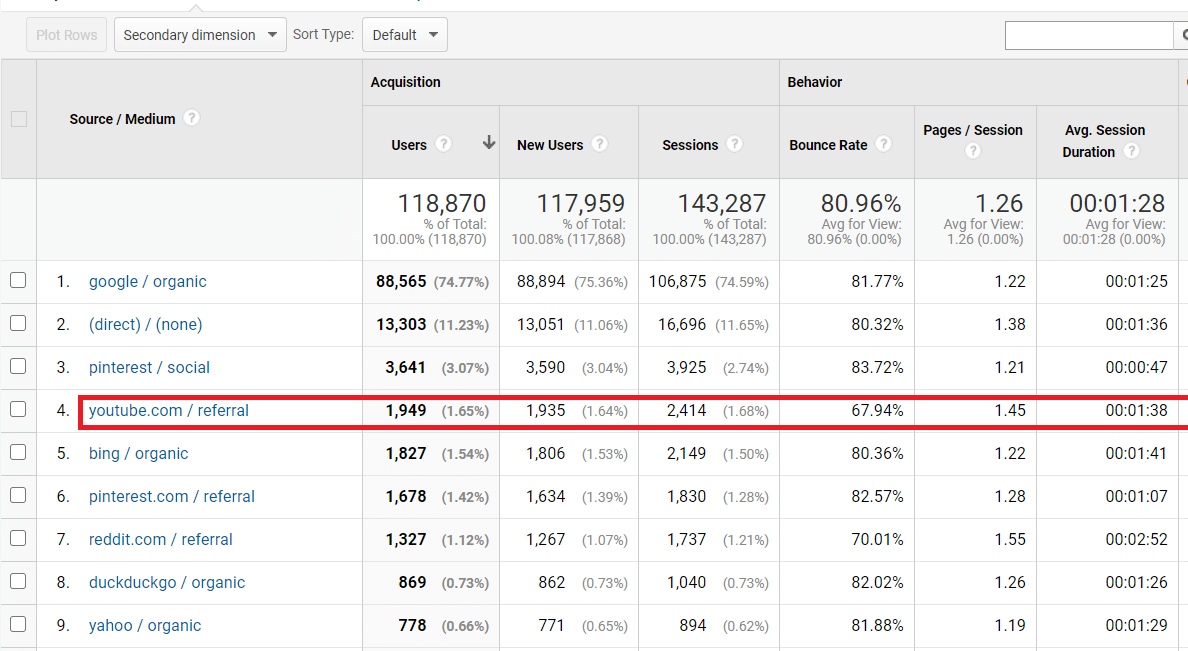
However, if you're a small channel and don't have anywhere to funnel traffic, making affiliate-focused videos could be a solid strategy if you aren't happy with your CPM/don't make enough with ads.
Other Common Questions/Myths
Alright, time to wrap up the topic of how much money YouTubers make by answering some of the most common questions I've seen around the web.
How Much Does YouTube Pay For 1 Million Views?
I've seen this question asked all over places like Quora and even YouTube itself.
However, because of the nature of advertising CPMs, there's no concrete answer.
Average CPM, ad engagement, and what countries your viewers are from plays a massive role. Seasonality also matters, as Q4 CPMs are traditionally higher than Q1 CPMs thanks to events like Christmas and Black Friday.
According to Vlogger Gear, YouTube pays an average of $600 to $7,000 per million views.
This is fairly in line with videos I've seen from content creators like Shelby Church:
In this YouTube income report video, Church states that YouTube pays an average of $2,000 to $5,000 per million views.
Whatever the case, if you get a million views, you're looking at some serious cash.
When Can You Go Full-Time With YouTube?
This is another common question I've seen on Reddit and Quora, and I think there's a math-answer and also an “it depends” kind of answer.
If you only make money with YouTube ads, you'd need millions of views to make the average annual salary in countries like Canada or the United States (assuming a million views pays $1,000 to $3,000 to stay a bit conservative).
Of course, if you put in an effort to sell merchandise and do affiliate marketing, you can generate more revenue.
However, as a realistic guess, I think you'd need several tens of thousands of subscribers to even take a crack at things.
This is assuming that when you go full-time, you can grow even faster because you have more time to work on your channel and publish videos regularly.
Ideally, you'd also have other income sources like a blog or streaming gig or something that isn't just dependent on YouTube ad revenue…events like Adpocalypse have proven that relying on YouTube ads for all of your income is a treacherous game.
Do YouTube Calculators Work?
There are dozens of YouTube calculators that estimate how much a channel earns in monthly advertising revenue.
After trying out a few for my own channel, it seems like they almost always undershoot.
Many YouTube calculators think my channel makes $1-$5 per day, even if I enter my views and average CTR.
Social Blade is really the closest YouTube calculator I've found, by far (they give such a wide range, so it's easy to be closer):
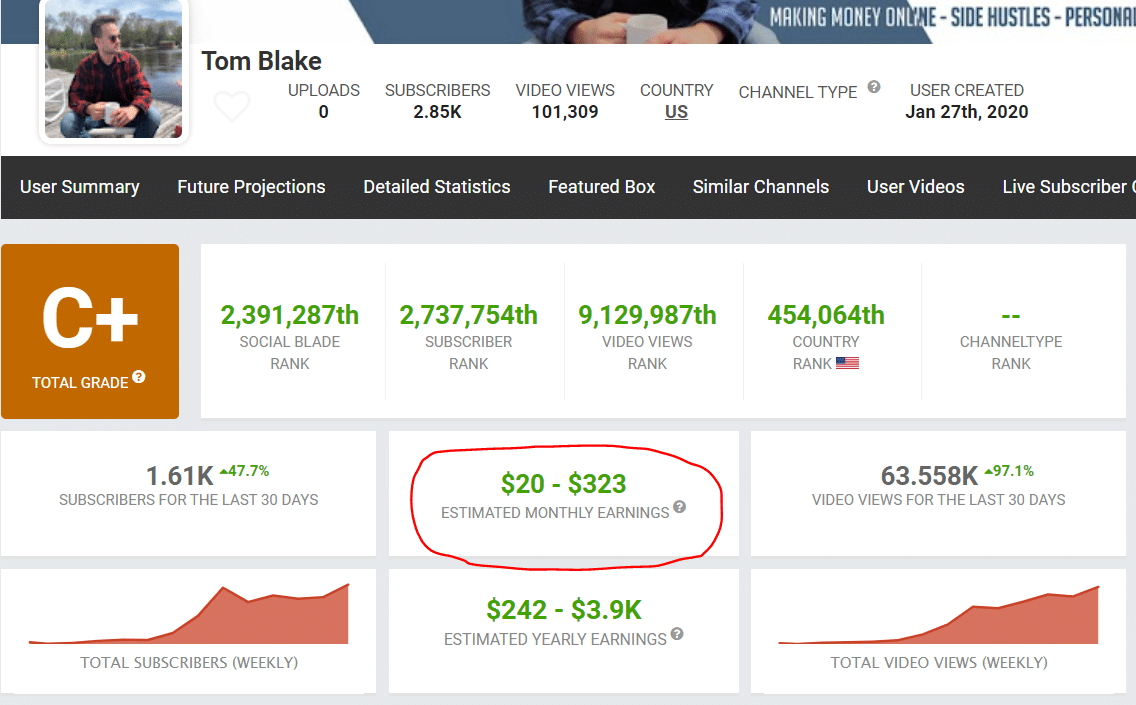
So, take these calculators with a grain of salt…or many grains.
Is YouTube Worth It In 2020?
Any online money making idea inevitably gets this question as well. In fact, I've even written a post about if blogging is worth it because blogging gets this question every year.
I didn't know the answer to this question a few months ago. However, I now firmly believe YouTube is worth it in 2020 and beyond if I had to extrapolate.
I started putting effort into this channel in March of 2020.
Within 4 months, the channel is now on track to earn $500+ per month in advertising revenue.
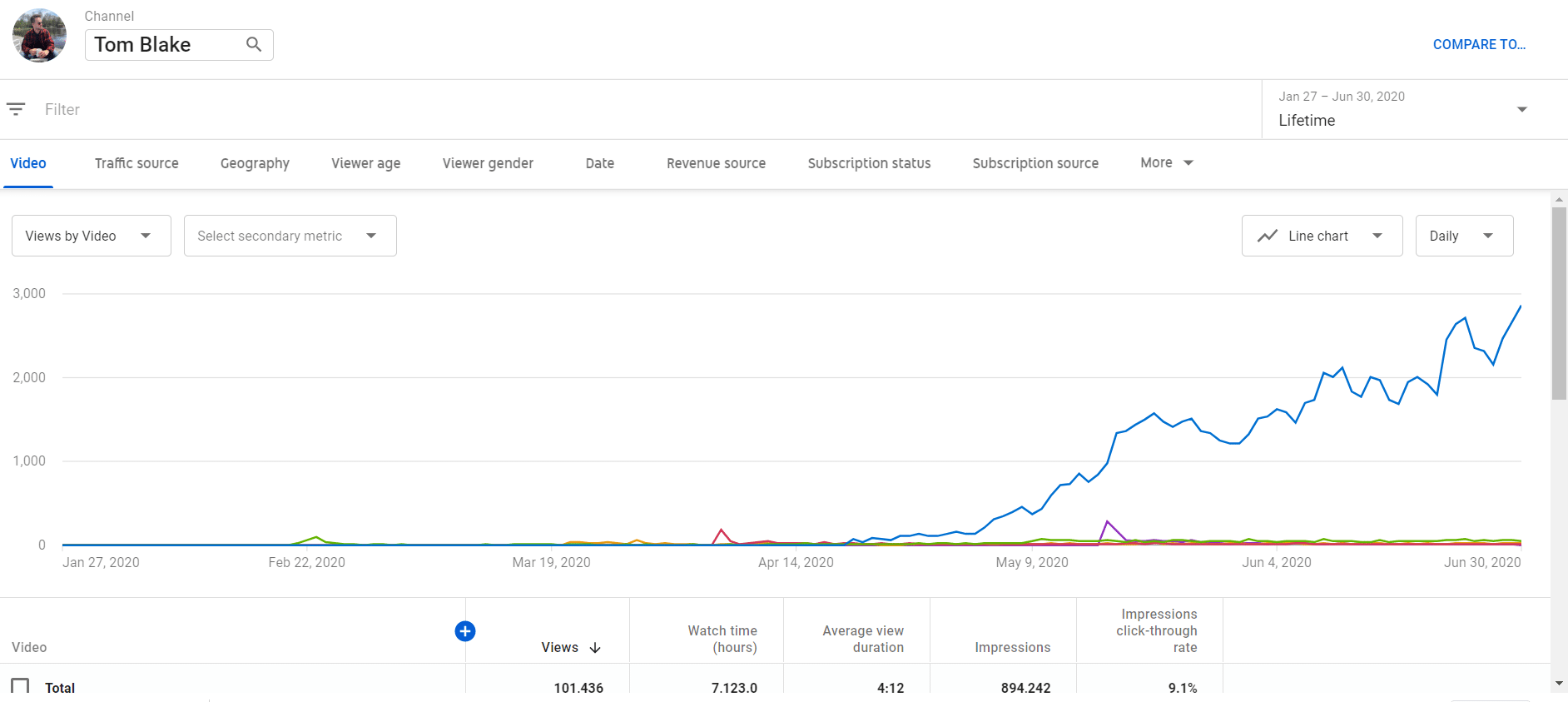
Again, a lot of this was dumb luck because the algorithm decided to push one of my videos. Only time will tell if the momentum lasts.
However, I think it's safe to say that few platforms give you the chance to grow so quickly and monetize the results…you can blog for years or grow an Instagram account and still make next to nothing.
Ultimately, if you want to create a new income stream this year, I think starting a YouTube channel has immense potential as long as you can stick to a video per week and put in the work!
Final Thoughts
I know there's no easy way to pinpoint how much money YouTubers make.
However, I hope that part 2 in this series has helped shed some insight into what the top YouTubers are making, as well as how much money small YouTubers make.
The fact that beginner channels can make $500+ within a couple of months is pretty mind blowing, and I think it highlights just how powerful this platform can be.
All it takes is one lucky video for you to turn your channel into rent money or groceries for the month.
It might take months or even a year or two to find that first break. However, the only way to get there is to start!
Thanks so much for reading! I'll catch you guys in the next one 🙂











